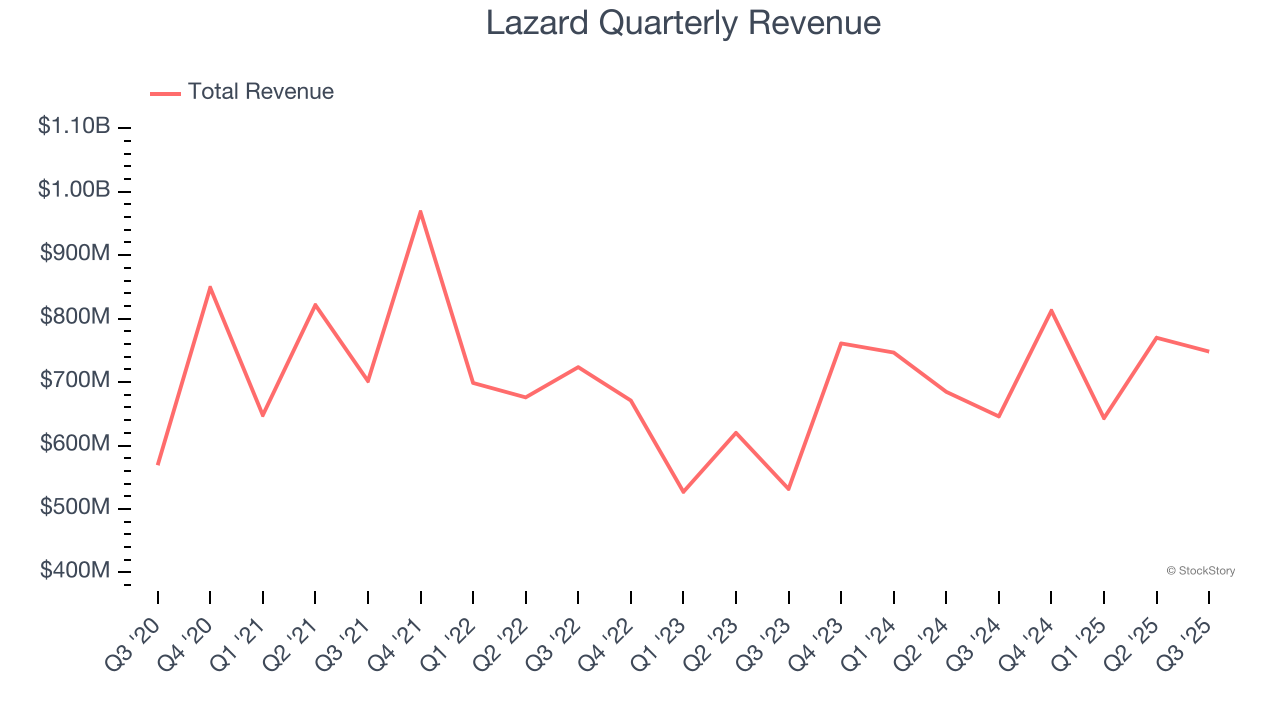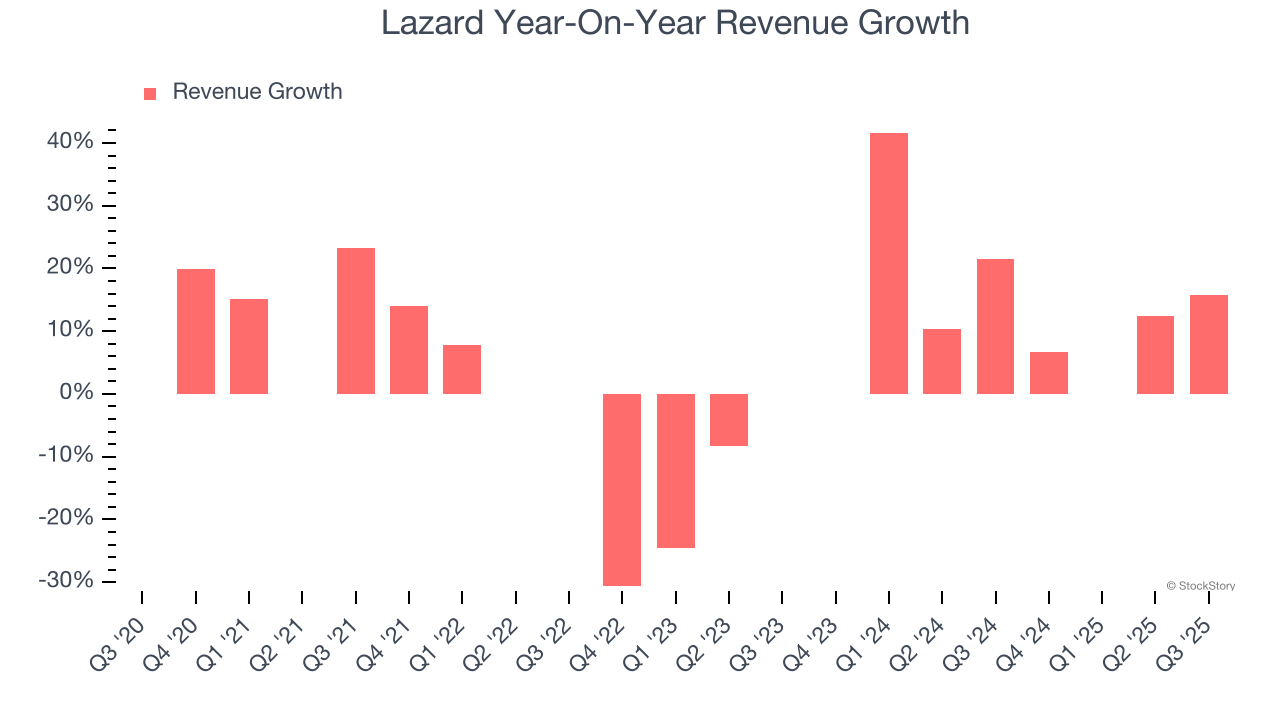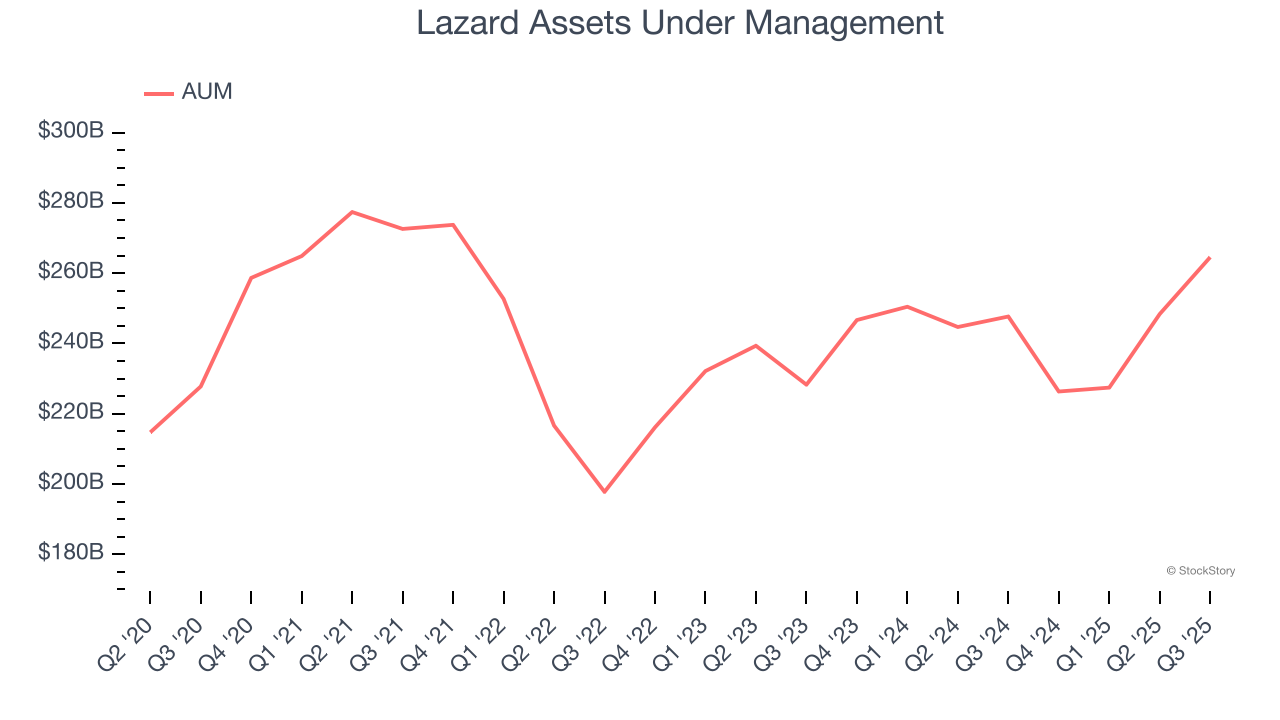
Financial advisory firm Lazard (NYSE:LAZ) beat Wall Street’s revenue expectations in Q3 CY2025, with sales up 15.8% year on year to $748.1 million. Its non-GAAP profit of $0.56 per share was 27.7% above analysts’ consensus estimates.
Is now the time to buy Lazard? Find out by accessing our full research report, it’s free for active Edge members.
Lazard (LAZ) Q3 CY2025 Highlights:
- Assets Under Management: $264.5 billion vs analyst estimates of $257.3 billion (6.8% year-on-year growth, 2.8% beat)
- Revenue: $748.1 million vs analyst estimates of $714.1 million (15.8% year-on-year growth, 4.8% beat)
- Pre-tax Profit: $94.93 million (12.7% margin, 41.1% year-on-year decline)
- Adjusted EPS: $0.56 vs analyst estimates of $0.44 (27.7% beat)
- Market Capitalization: $4.7 billion
Company Overview
Tracing its roots back to 1848 when it began as a dry goods merchant in New Orleans, Lazard (NYSE:LAZ) is a global financial advisory and asset management firm that provides strategic advice to corporations, governments, institutions, and wealthy individuals.
Revenue Growth
Reviewing a company’s long-term sales performance reveals insights into its quality. Any business can put up a good quarter or two, but many enduring ones grow for years. Over the last five years, Lazard grew its revenue at a tepid 4.5% compounded annual growth rate. This was below our standard for the financials sector and is a tough starting point for our analysis.

Long-term growth is the most important, but within financials, a half-decade historical view may miss recent interest rate changes and market returns. Lazard’s annualized revenue growth of 12.5% over the last two years is above its five-year trend, suggesting its demand recently accelerated.  Note: Quarters not shown were determined to be outliers, impacted by outsized investment gains/losses that are not indicative of the recurring fundamentals of the business.
Note: Quarters not shown were determined to be outliers, impacted by outsized investment gains/losses that are not indicative of the recurring fundamentals of the business.
This quarter, Lazard reported year-on-year revenue growth of 15.8%, and its $748.1 million of revenue exceeded Wall Street’s estimates by 4.8%.
Unless you’ve been living under a rock, it should be obvious by now that generative AI is going to have a huge impact on how large corporations do business. While Nvidia and AMD are trading close to all-time highs, we prefer a lesser-known (but still profitable) stock benefiting from the rise of AI. Click here to access our free report one of our favorites growth stories.
Assets Under Management (AUM)
Assets Under Management (AUM) is the total capital a firm oversees or manages on behalf of clients. Fees on this AUM, typically a small percentage, are contractually recurring and provide a high level of stability to revenue even if investment performance lags (although too much poor investment performance eventually hurts fundraising ability).
Lazard’s AUM has declined at an annual rate of 2.6% over the last four years, much worse than the broader financials industry. When analyzing Lazard’s AUM over the last two years, we can see that growth accelerated to 2.7% annually. Fundraising or short-term investment performance were net detractors to the company over this shorter period since assets grew slower than total revenue. Keep in mind that asset growth can be erratic and seasonal, so we don't rely on it too heavily for our business quality analysis.

Lazard’s AUM punched in at $264.5 billion this quarter, beating analysts’ expectations by 2.8%. This print was 6.8% higher than the same quarter last year.
Key Takeaways from Lazard’s Q3 Results
It was good to see Lazard beat analysts’ EPS expectations this quarter. We were also glad its AUM outperformed Wall Street’s estimates. Zooming out, we think this was a good print with some key areas of upside. The stock traded up 5.5% to $52.49 immediately following the results.
Sure, Lazard had a solid quarter, but if we look at the bigger picture, is this stock a buy? The latest quarter does matter, but not nearly as much as longer-term fundamentals and valuation, when deciding if the stock is a buy. We cover that in our actionable full research report which you can read here, it’s free for active Edge members.
